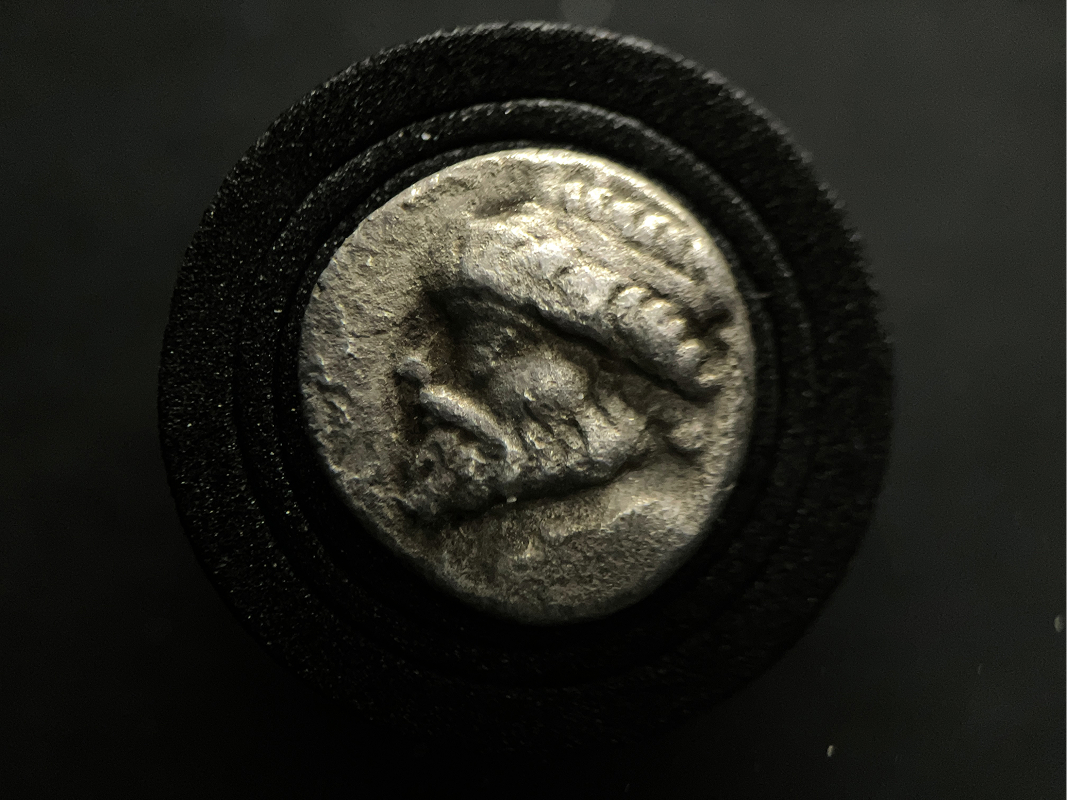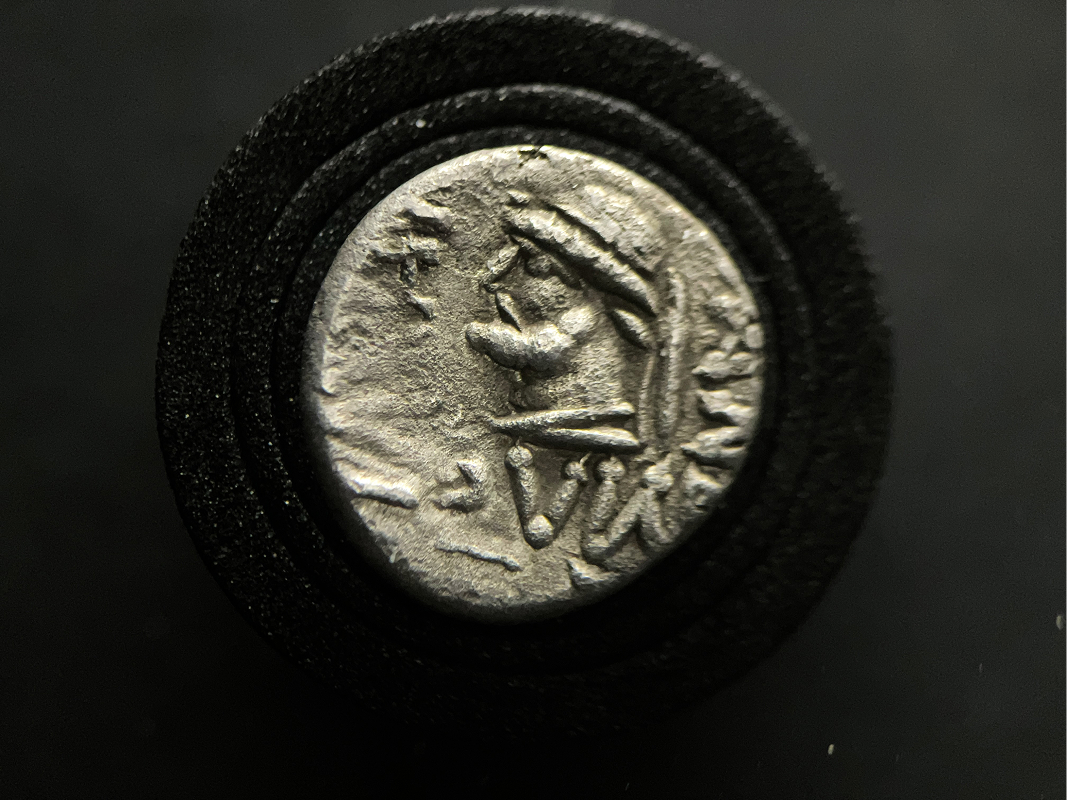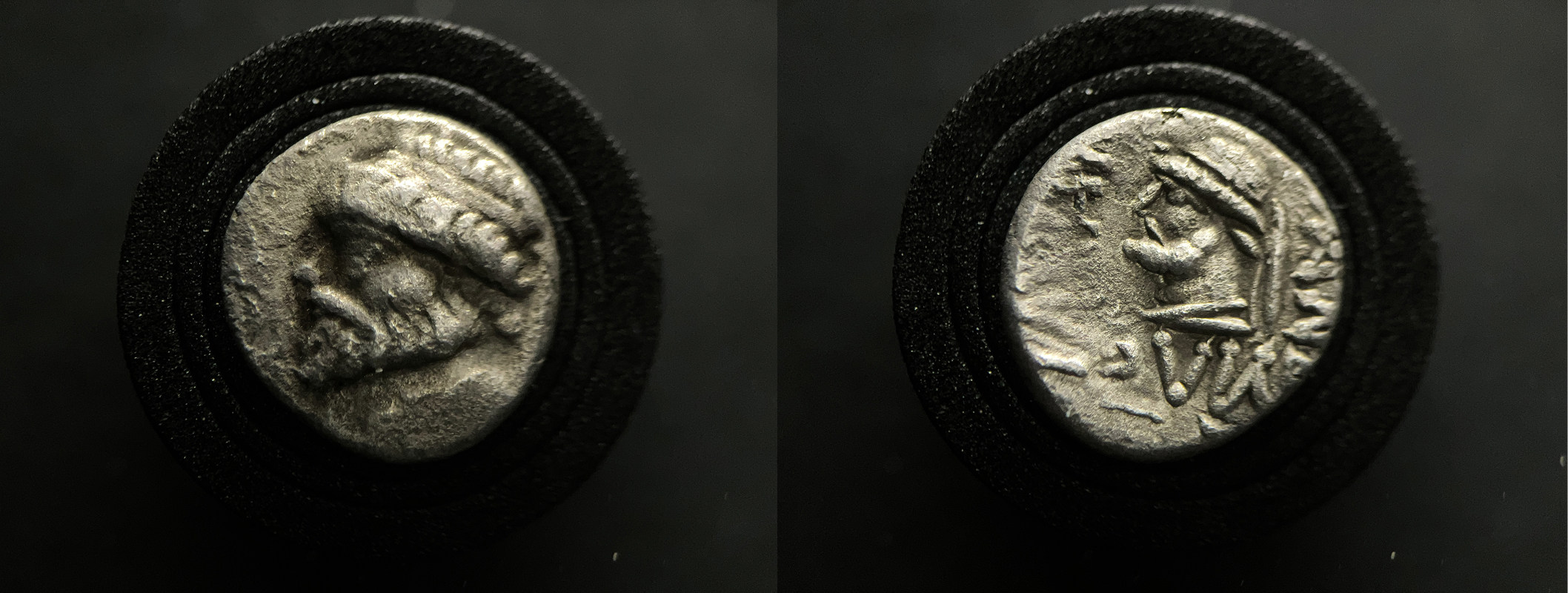Silver Drachm of Kamnaskires V
Dynastic Identity in Greek Script
Elymais, a semi-independent kingdom in southwestern Iran, thrived during the late Seleucid and Parthian periods. Its kings issued coins that combined Greek stylistic elements with Iranian dynastic legitimacy. This silver drachm, minted under Kamnaskires V between 46 and 32 BC, is a key example of this blend, featuring two royal portraits and a Greek inscription celebrating hereditary rule.
Obverse:
Kamnaskires V with Anchor Motif
The obverse shows a diademed and draped bust of Kamnaskires V facing left. Behind his head is an anchor symbol, which may refer to:
- Seleucid influence, as the anchor was a common motif under Seleucid rule
- Naval or administrative power, although Elymais was inland
The use of the Greek-style bust and anchor reinforces the kingdom’s Hellenistic coinage tradition, despite its Iranian roots.
Reverse:
Portrait of Kamnaskires IV and Four-Line Greek Legend
The reverse displays a second diademed bust, this one of Kamnaskires IV, also facing left. This dynastic homage positions Kamnaskires IV as a founder figure or political legitimizer, typical in hereditary monarchies seeking to affirm succession.


Numismatic Details
- Ruler: Kamnaskires V
- Region: Elymais (southwestern Iran)
- Date: 46–32 BC
- Denomination: Silver Drachm (1)
- Metal: Silver
- Weight: 2.99 g
- Diameter: 15.90 mm
- Orientation: 12h
- Obverse: Diademed bust left of Kamnaskires V, anchor behind head
- Reverse: Diademed bust left of Kamnaskires IV, Greek four-line legend
- Script: Greek
- Legend Translation: “Of King Kamnaskires, son of King Kamnaskires”
Greek Inscription:
The four-line Greek legend typically reads:
ΒΑΣΙΛΕΩΣ
ΚΑΜΝΑΣΚΙΡΟΥ
ΤΟΥ ΕΓ ΒΑΣΙΛΕΩΣ
ΚΑΜΝΑΣΚΙΡΟΥ
Translation:
“Of King Kamnaskires, son of King Kamnaskires”
The use of Greek language persists here for continuity with Seleucid-era practices and as a diplomatic script, while the content itself asserts local dynastic lineage.
At the bottom may appear a date using Greek numerals, such as ΖΞΣ, which corresponds to Year 267 of the Seleucid Era, roughly 46/45 BC. Not all coins show the date clearly, depending on die wear and strike alignment.
Historical Context
Kamnaskires V ruled Elymais at a time of high autonomy under nominal Parthian oversight. His coinage reflects:
- A desire for independence, shown in the dynastic portrait series
- A Hellenistic legacy, inherited from Seleucid regional control
- Localized legitimacy, with both father and son shown in regal form
The kingdom of Elymais maintained distinct cultural practices from both Hellenistic and Parthian norms, with coins often serving as the primary archaeological window into their political structure.
Collectibility and Legacy
Coins of Elymais are not as widespread as those of Parthia or Persis, but they are increasingly valued for their:
- Dynastic iconography
- Dual-portrait types
- Greek inscriptions adapted to Iranian royal themes
This drachm is ideal for collectors seeking:
- Post-Hellenistic Iranian regional coinage
- Transitional period coins between Greek and Parthian systems
- Portrait pairings of father and son rulers in ancient numismatics
Acquire a Historical Statement in Silver
At TerraNumis, we present coins that reflect not just empires but the regional stories between them. This silver drachm of Kamnaskires V, featuring his own portrait and that of his royal father Kamnaskires IV, speaks to the power of legacy in ancient Iranian kingship.

